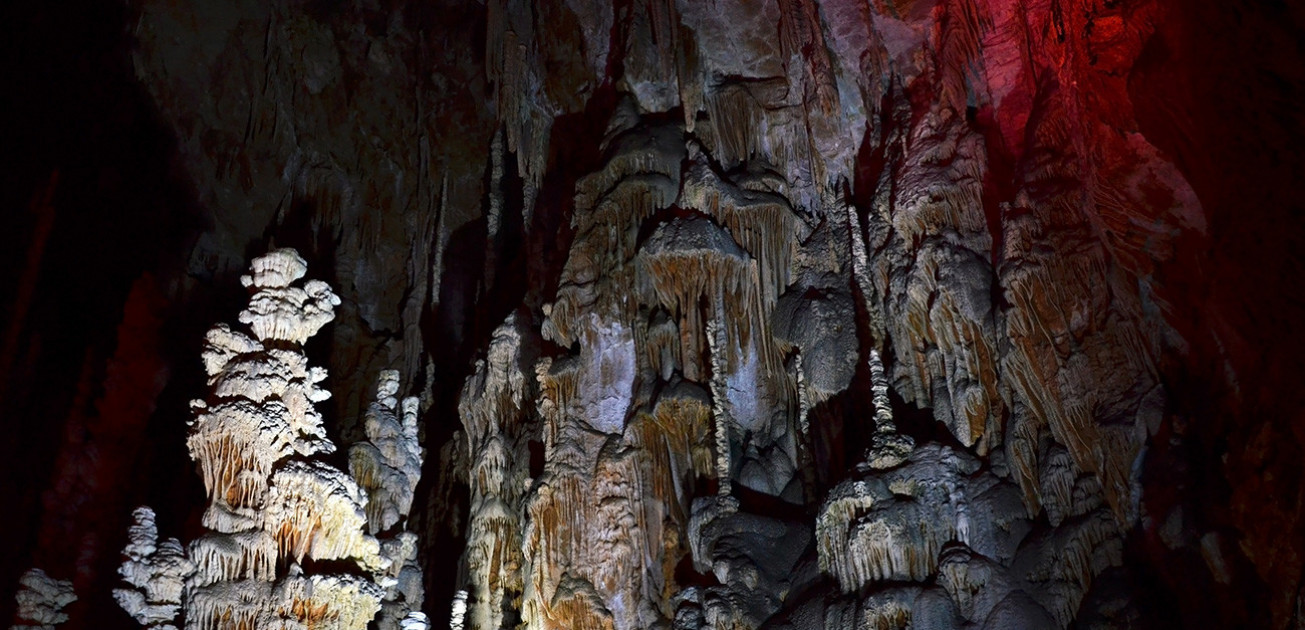


"Our world’s caves are places of wonder, mystery and majestic beauty. Show caves around the world are embracing their role in protecting and preserving caves and providing a place for people to learn about these special, natural, cultural and historical resources.
Show caves also play another important nature tourism role of sustainable economic development, providing jobs, and helping the economy of their regions.”
The Tettyei Mésztufa-barlang (Tettyei Tufa Cave) is a rather new attraction of Pécs, although the show cave was already open for the public in the early 20th century. It was named Gateway to Hell and dragon hanging from the ceiling was the main attraction. Closed for a very long time, the cave has now been reopened. The dragon is still there, but the cave also has an interactive display on various related topics. This cave is pretty young: it is less than 10,000 years old and was formed as a primary cave during the deposition of the tufa. The melting waters of the Ice Age flowing through the limestone dissolved limestone underground and redeposited much of it right at the spring. During this process numerous rooms and passages were formed simply by irregular growth. The resulting net of only partly connected cavities was later utilized by man. Artificial connections were created and rooms enlarged. The soft rock allowed to work the walls with pick and shovel. During the Middle Ages the tufa hill was used to build a castle on top, called Tettye castle. The cave was named after the castle and obviously became a part of its fortification.
The Tettyei Mésztufa-barlang (Tettyei Tufa Cave) is a rather new attraction of Pécs, although the show cave was already open for the public in the early 20th century. It was named Gateway to Hell and dragon hanging from the ceiling was the main attraction.
Closed for a very long time, the cave has now been reopened. The dragon is still there, but the cave also has an interactive display on various related topics.
This cave is pretty young: it is less than 10,000 years old and was formed as a primary cave during the deposition of the tufa. The melting waters of the Ice Age flowing through the limestone dissolved limestone underground and redeposited much of it right at the spring. During this process numerous rooms and passages were formed simply by irregular growth. The resulting net of only partly connected cavities was later utilized by man. Artificial connections were created and rooms enlarged. The soft rock allowed to work the walls with pick and shovel.
During the Middle Ages the tufa hill was used to build a castle on top, called Tettye castle. The cave was named after the castle and obviously became a part of its fortification.






Address: Tettyei Mésztufa-barlang, Tettye tér, 7625 Pécs
Town / City: 7625 Pécs
Country: Hungary
Email:info@barlangpecs.hu
Phone: +36-72-211-830
Latitude: 46.0870895386
Longitude: 18.2356204987
Name: Tettye Travertine Cave
Name original: Tettyei Mésztufa-barlang
ISCA member: MINISTRY FOR RURAL DEVELOPMENT, SPELEOLOGICAL DEPARTMENT
Length: 0 m
Depth: 0 m
Elevation of entrance: 0 m
Number of visitors: 0 / per year
Length of show path: m
Duration of visit: min